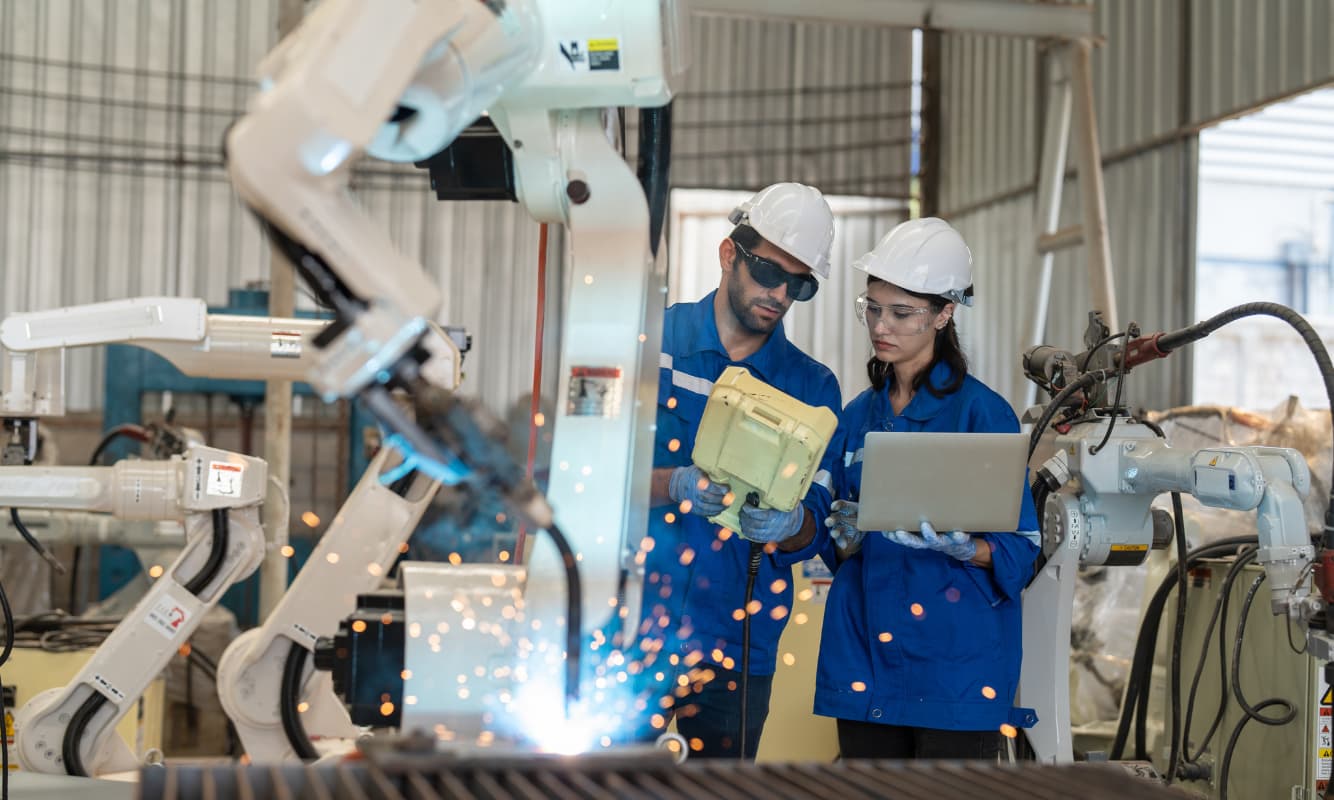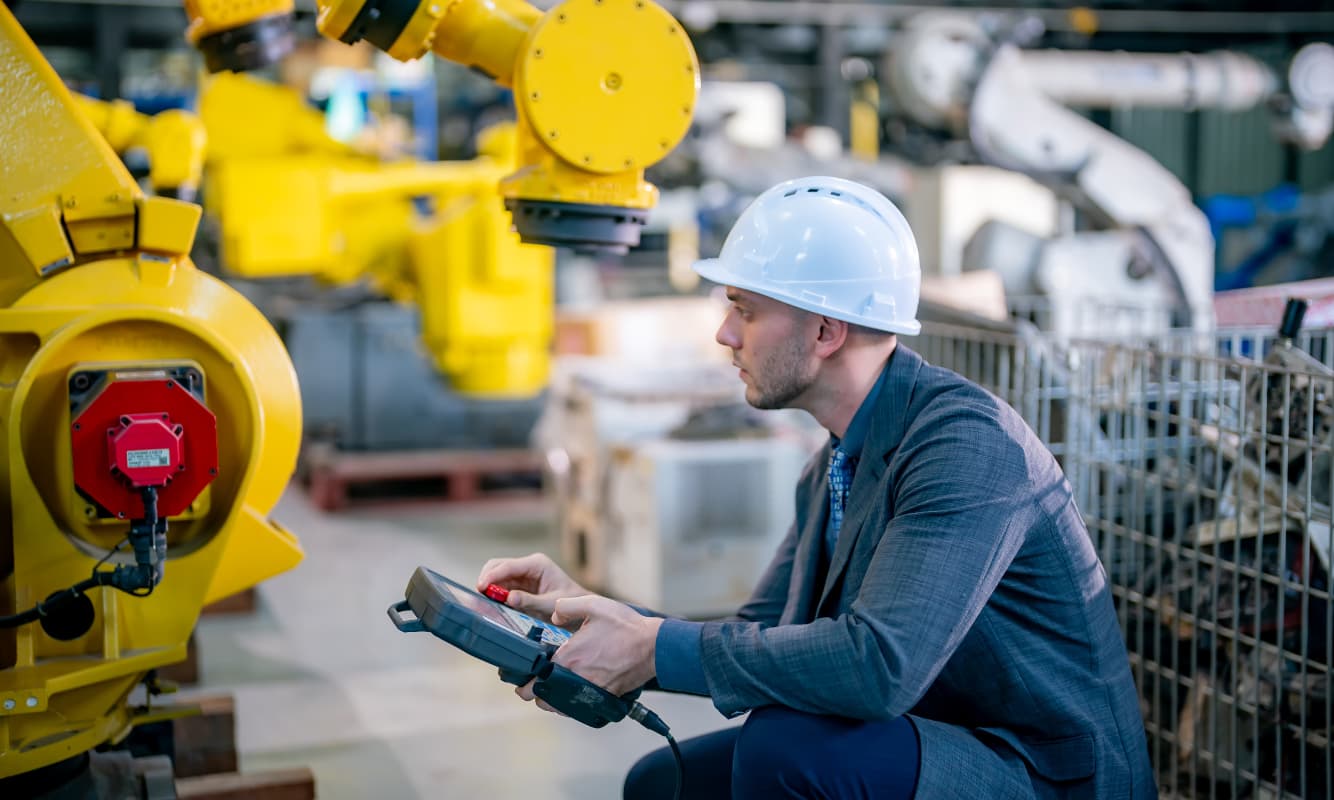With Industry 5.0 looming on the horizon, are you prepared? Discover six key areas of focus.
Industry 4.0 introduced a new era of interconnectedness, automation, and decentralized decision-making. The concept of “smart factory” increased interest in a future that included the Industrial Industry of Things (IIoT), cloud computing, and big data analytics. Here, manufacturers streamline processes to improve efficiency and productivity on the production floor and beyond.
Now that Industry 5.0 is fast approaching, businesses are curious about its impact and how best to adapt. The revolution will be characterized by extensive human-machine collaboration, and manufacturing leaders will strive for loftier goals. Prioritizing workers’ well-being in production processes and promoting resilient, sustainable, human-centric innovation are among those.
To prepare for this paradigm shift, you should focus on six areas: digital technologies, sustainability, collaboration, employee upskilling, data analytics, and resilience. Let’s break that down:
1. Embracing Digital Technologies
Industry 5.0 will heavily rely on IoT, artificial intelligence (AI), and automation. Yet, despite these digital technologies being key components of Industry 4.0, some manufacturers have lagged in implementing them-this needs to change in 2024 and beyond.
In Industry 5.0, IoT will connect machines and facilitate real-time data exchange, while AI will help analyze data and facilitate automation like never before. This will drive unprecedented efficiency, cost savings, product quality, and worker safety. However, establishing the right capabilities early will be key to maximizing benefits.
To illustrate, consider Bosch. The home appliances and auto components manufacturing giant’s integration of IoT and AI across multiple plants reduces inspection workloads and errors and improves worker productivity. It has also helped Bosh reduce its annual carbon dioxide emissions by 14% and electricity consumption by 18%.
Essentially, Bosch is enjoying the benefits of Industry 5.0’s most powerful technologies today. And you, too, can by putting your best foot forward.
2. Prioritizing Sustainability
While previous technological revolutions put capitalism above all else, Industry 5.0 suggests an alternative approach-striving for social objectives beyond profitability and growth. Here, the emphasis is on waste reduction, energy efficiency, optimal resource use, and respecting our planet’s limits.
This coincides with rising consumer demand for eco-friendly products. Today’s consumers care deeply about environmental and social responsibility and back it up with their wallets. At the same time, governments worldwide are imposing stricter sustainability standards.
Put differently, sustainable practices are “must haves” to confidently navigate Industry 5.0 and changing demands. Therefore, manufacturers should quickly embrace smart automation, renewable integration, value network integration, and circular economy models.
3. Fostering Collaboration
One of the good things about embracing Industry 5.0 is that you don’t have to do everything alone. Neither do you have to reinvent the wheel. Today, it’s possible to integrate innovations by other companies into your manufacturing ecosystem and reap benefits immediately.
By partnering with leading technology vendors, suppliers, and industry players, you can share knowledge and resources and access the latest technology for faster innovation. And that’s exactly what forward-thinking manufacturers are doing.
For example, BMW is leveraging NVIDIA’s Omniverse platform to plan and virtually optimize the layouts, robotics, and logistics systems of its soon-to-open smart EV factory in Debrecen, Hungary.
The move will save BMW millions of dollars by allowing the automaker to predict and mitigate potential mishaps before deploying robots. It will also allow them to use a technology that would otherwise take them over two decades to build (Omniverse is the culmination of 25 years of NVIDIA graphics, simulation, accelerated computing, and AI technologies).
Another excellent way to collaborate is to tap a digital transformation partner like NRI to handle the technical details of Industry 5.0 migration. Our team will work with you to gain knowledge and understanding about your specific project requirements. Then, our pros will get to work building all the capabilities you need.
4. Investing in Employee Training
Remember, Industry 5.0 is all about human-machine collaboration, not one without the other. So, don’t skimp on training. Educating the workforce to use AI and other Industry 5.0 technologies efficiently is the only guarantee that they’ll become knowledgeable and confident operators.
Here, you can leverage various approaches like in-house training sessions, online tutorials, or NRI’s Adoption & Change Management program to support user adoption and ensure minimal disruption during the change.
Admittedly, upskilling takes time, money, and effort. However, the long-term benefits of having a productive workforce that can navigate operations without interruption and troubleshoot and fix issues on the fly are priceless. Investing in their growth is investing in your company’s growth.
5. Leveraging Data Analytics
An often repeated saying in business corridors nowadays is that “data is the new gold.” This quote carries its weight in gold in Industry 5.0. With analytics, you can mine crucial data from your manufacturing ecosystem and refine it to work for you.
Never has making smart, informed decisions been so easy. By leveraging real-time data analytics, you can glean meaningful insights from IoT devices on the production floor to optimize processes, streamline operations, reduce costs, and minimize waste. Further, you can anticipate when equipment maintenance is due to prevent unwanted downtime.
Customer experiences benefit, too. Data insights enable personalized products and services, meeting customer needs more effectively.
As we step into an ultra-competitive Industry 5.0-where companies can access all the tools for smart decision-making-even small margins will matter. Therefore, it’s important to implement the best-in-class analytics capabilities to stay ahead.
6. Focusing on Resilience
As you are likely aware, supply chain disruptions and geopolitical risks considerably impact material availability, cost, and production processes. Recent events like COVID-19, Brexit, and the Russian invasion of Ukraine have taught us this lesson all too well. Therefore, developing proactive strategies to absorb potential external shocks is crucial for resilient and continuous operations in Industry 5.0.
Diversifying your risk with onshore, nearshore, and offshore capabilities is a good place to start. Additionally, it’s essential to understand (or at least predict) how external factors will play out within the next few years. This includes everything from the technologies suppliers might use to potential changes in regulatory and geopolitical frame conditions.
Identifying potential future scenarios will help you develop a solid contingency plan and ensure you aren’t rushing to put out fires at the last minute.
Embrace Industry 5.0 With NRI’s Help
The manufacturing industry is at a critical juncture. Tech-phobic companies that are slow to embrace Industry 5.0 risk losing competitiveness as their forward-thinking counterparts leverage it for efficiency and innovation.
To stay at the cutting edge, you must embrace a holistic approach that includes digital technologies, sustainability, collaboration, employee upskilling, data analytics, and resilience.
Where are you with Industry 5.0 adoption? We’d like to hear from you. Engage with NRI for expert guidance and tailored solutions to navigate the transition.



